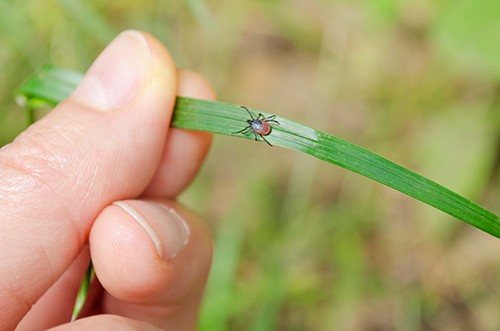Due in part to the widespread effects of climate change, tick infections are becoming increasingly more common. In fact, there is no longer a clear-cut “tick season,” as ticks can remain active through the milder winter months.
Deer, livestock, rodents, geese, owls, coyotes, foxes, chickens, and even black bears can spread ticks to humans and pets. Hikers and park employees are at risk for spreading ticks through park infestations. Ticks have an affinity for invasive plants, non-native grasses and brush, and may hitch a ride on unsuspecting landscapers moving from one job site to another.
Recommended course: Ticked Off: Myths, Truths, and Realities of Tick-Borne Infections
The Asian Longhorned Tick
One particular species, the Asian Longhorned Tick (ALHT) (Haemaphysalis longicornis), has emerged as danger to people and livestock. An invasive species, ALHT is normally native to Eastern China, Japan, the Russian Far East and Korea. It was first discovered in the US on sheep in New Jersey in 2017.
Since then, ALHT have rapidly spread throughout the United States. They are currently found in more than 19 states. The ALHT can be deadly to livestock. Cows and bulls suffering from an infestation can die from extreme blood loss when thousands of ticks begin simultaneously feeding on one animal.
Tick-borne diseases
ALHT are asexual ticks that can reproduce without a male. Each female ALHT can produce approximately 2000 eggs. This tick species also acts as vectors for both humans and livestock. ALHT can carry and spread Lyme disease and Rocky Mountain Spotted Fever. Some data has also identified anaplasmosis, babesiosis and ehrlichiosis being transmitted by the ALHT.
Fortunately, this particular tick does not typically like human skin as much as other well-known native ticks. Therefore the overall risk of human infection is largely unknown at this time. Ongoing monitoring and research of this particular species of ticks will reveal any further epidemiological risk of disease.
Preventing tick infestations and infections
ALHT are about the size of a sesame seed but can grow to the size of pea after feeding on a suitable host. It is essential for anyone working with livestock, environmental workers or anyone spending time outdoors to use effective tick repellent such as Permethrin 0.5% on clothing, shoes. or boots and camping gear. The protection remains effective through 5-6 washings.
Additionally, the Environmental Protection Agency (EPA) recommends products containing DEET, picaridin, and IR3534 as effective tick repellents. Avoid use of any of these products in children under the age of three.
Essential oils have not been well studied but ticks do not like garlic, lavender, rosemary, sage, mint or marigolds. Essential oils are safe for skin as long as they are premixed in another vehicle such as a cream, lotion or witch hazel.
References
- Center for Disease Control (CDC). (2023). What you need to know about Asian Longhorned ticks-A new tick in the United States. https://www.cdc.gov/ticks/longhorned-tick/index.html
- Center for Disease Control (CDC). (2020). Preventing tick bites. https://www.cdc.gov/ticks/avoid/on_people.html
- Rochlin I, Benach JL, Furie MB, Thanassi DG, Kim HK. Rapid invasion and expansion of the Asian longhorned tick (Haemaphysalis longicornis) into a new area on Long Island, New York, USA. Ticks Tick Borne Dis. 2023 Mar;14(2):102088. doi: 10.1016/j.ttbdis.2022.102088. Epub 2022 Nov 21. PMID: 36436461; PMCID: PMC9898124.
- US Department of Agriculture (2021). Asian Longhorned Tick (Haemaphysalis longicornis)
- https://www.aphis.usda.gov/publications/animal_health/alert-asian-longhorned-tick.508.pdf




